MusicRadar Verdict
The best incarnation and easily adds enough to bring it into 2021. Other options cost less… but they’re not a Prophet-5, are they?
Pros
- +
All the features of the originals plus filter options for the various revisions.
- +
Amazing sounds and easy modulation – the Poly-Mod’s a classic.
- +
Velocity and aftertouch bring the sounds alive .
- +
Fantastic build quality and updated connectivity.
Cons
- -
Expensive compared to some similarly-spec’ed machines.
- -
You won’t really want to gig with it.
- -
MusicRadar's got your back
What is it?
The original Sequential Circuits Prophet-5 changed the world – simple as that. So the company’s new iteration – essentially the fourth revision – has so much synth history and music associated with it that it’s impossible not to mention those previous versions, and some of the quite glorious music they helped create. So this isn’t just another synth release; it’s like if Back To The Future returned for a fourth instalment. Only bigger.
Only around 6,000 Prophet-5s were originally sold (between 1978 and 1984), but because it was the first polysynth you could use to store and recall sounds, most of those 6,000 buyers were either music icons or became icons with the synth’s help. There was Kraftwerk, Jarre, Floyd, Abba, Clarke, YMO, Jackson, Dre, Genesis and Numan… the usual legends.
But it was perhaps some lesser-known acts that dropped the best Prophet-5 moments. Japan’s Tin Drum album is one of the best releases from the era – mostly as it doesn’t sound like it was released in that era.
And smaller synth poppers like New Musik and The Mobiles, rockier names like The Cars, Steve Winwood and The Fixx, plus soundtrack composers like Mark Isham and John Carpenter (who used it composing the music of many of the films he directed) would give the Prophet-5 an enviable reputation amongst nerds and players alike.
This isn’t just another synth release; it’s like if Back To The Future had a fourth instalment
This was all enough to give the first three revisions of the Prophet-5 legendary status. But again, like Back To The Future, it was a status that was entwined with the 80s. Sequential closed in 87 and the name was bought by Japanese giant Yamaha who shut the company down two years later.
However, in 2015 Yamaha returned the Sequential name to its founder, Dave Smith, who had by then been successfully producing hardware synths under his own name. It was only a matter of time before the Prophets started appearing again and here we are with a fourth version of the Prophet-5.
Performance and verdict
Prophet-5 is, as you probably know or have guessed, a five-voice polyphonic synth, each voice using two VCOs. Sequential has also released a 10-voice version in the form of the otherwise identical Prophet-10 (more later).
Want all the hottest music and gear news, reviews, deals, features and more, direct to your inbox? Sign up here.
It uses the Curtis 3340 VCOs found in the Rev3 Prophet-5 (a much more reliable design compared to the SSMs used in the Rev2). The two oscillators generate both square and sawtooth waves, with Oscillator B adding a triangle. They can be played in sync and B can act as an LFO, modulating the frequency, pulse width and filter of Osc A.
There’s further modulation by way of a multi-waveform LFO and Wheel-Mod section that allows you to assign LFO and noise sources to five destinations, levels controlled by the mod wheel.
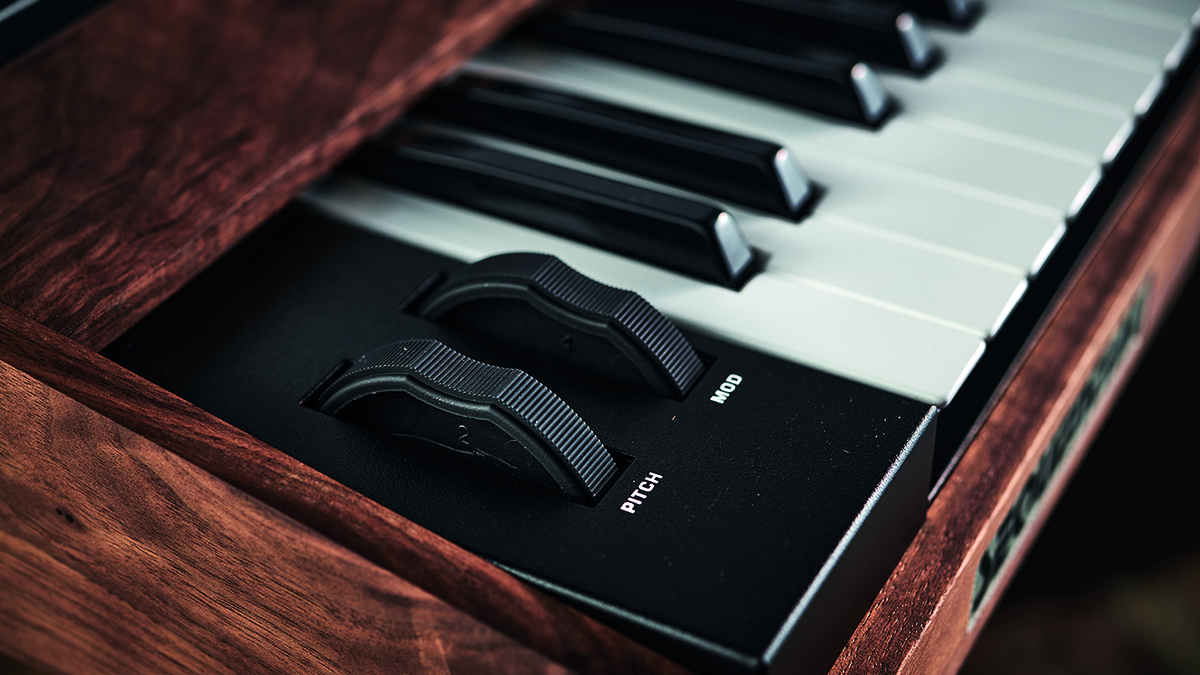
Then there’s Poly-Mod, a feature that was one of the classic draws of the original Prophet design. It includes two sources (filter envelope and Oscillator B) and three destinations (Oscillator A’s frequency or pulse width, plus filter cutoff).
It’s a beautifully implemented modulation setup that not only replicates the original design but makes for brilliant and instant, hands-on sound design. Who needs a huge modulation matrix when you get results this good from a simple design?
So far, then, we’re talking identical sonic ingredients and features to the original Prophet Rev3, and the filters maintain the theme… with a twist.
Dave Smith describes this iteration of the Prophet-5 as “the best of all Prophet-5s” because, just like Korg/ARP’s reintroduction of the Odyssey a few years back, you can effectively select between the previous three revisions by switching filters.
Switch between either Rev1/2 for the SS1 2140 low-pass filter (like the 2040 used in the Rev1 and 2) or hit the same button again for Rev3, the CEM 3320 filter.
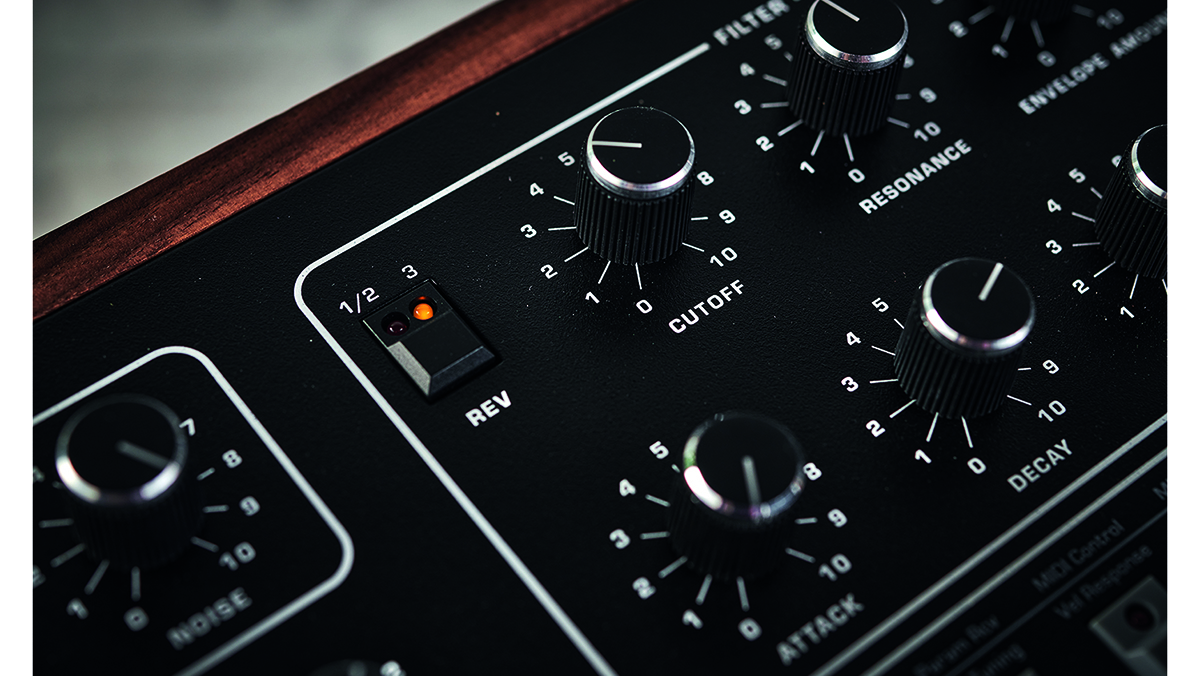
Overall, then, it’s probably best to think of Rev4 – as Dave Smith obviously intended – as very much a continuation of where the Rev3 left off. But there are some important modern extras.
Rev4 Prophet-5 includes both velocity sensitivity and aftertouch – very important, as we’ll see – a five-octave, semi-weighted keyboard plus USB connectivity (alongside MIDI, Gate and CV in/out).
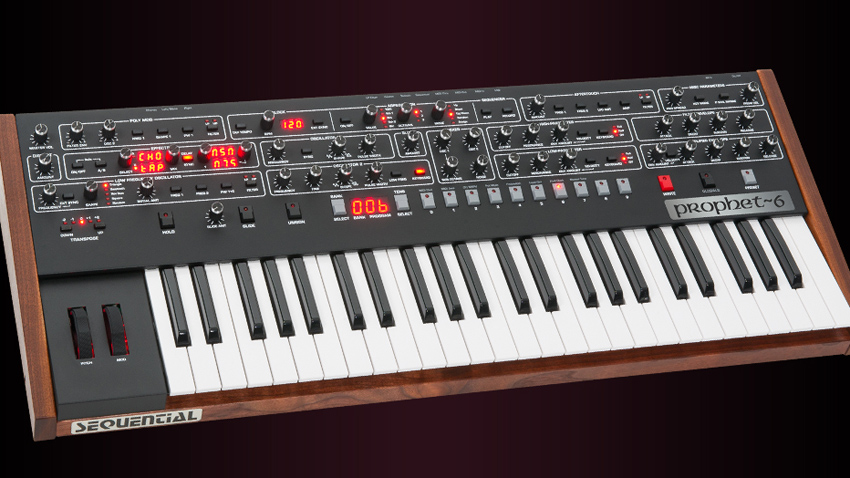
• Sequential Prophet-6
The first Sequential synth inspired by the Prophet-5 actually exceeds its specs with an extra voice, digital effects, arpeggiator and step sequencer yet streets at less. It’s not the ‘real deal’ like the 5 but can’t be ignored.
• Sequential Prophet-10
And nor really can the 10. It’s identical to the 5 in every way but doubles the voice count for an extra £6-800 (street).
• Arturia PolyBrute
An analogue polysynth with six voices, a huge number of features, loads of modulation and real-time control plus a varied sound. There’s a lot going on here and it costs a lot less but it’s not a classic… yet.
With newer electronic components used to produce this version, Sequential understood that part of the original three revisions’ charm was the instability of certain components that – as with a lot of classic analogue synths – gave them their personality.
So the company also added a Vintage Knob that effectively allows you to introduce that unstable randomness and dial back in history through the various revisions, increasing the temperamental nature of the machine to the max as you dial in 1 for Rev1.
There are also 200 fixed factory presets and 200 user spots and you even get the 40 sounds that shipped with the original 1978 model. Nice touch.
This synth is pretty heavy. Not CS-80 heavy, but certainly heavier than you might expect a modern Prophet-5 to be. But that’s because Sequential has housed it in the original-styled walnut body.
It’s beautiful, as you can see, and while this finish makes it hefty, each Prophet-5 looks unique because the wood varies in pattern, and also feels ‘reassuring’ – this is the real playing deal. And the big physical presence in front of you demands a big physical sound and Prophet-5 doesn’t disappoint… eventually.
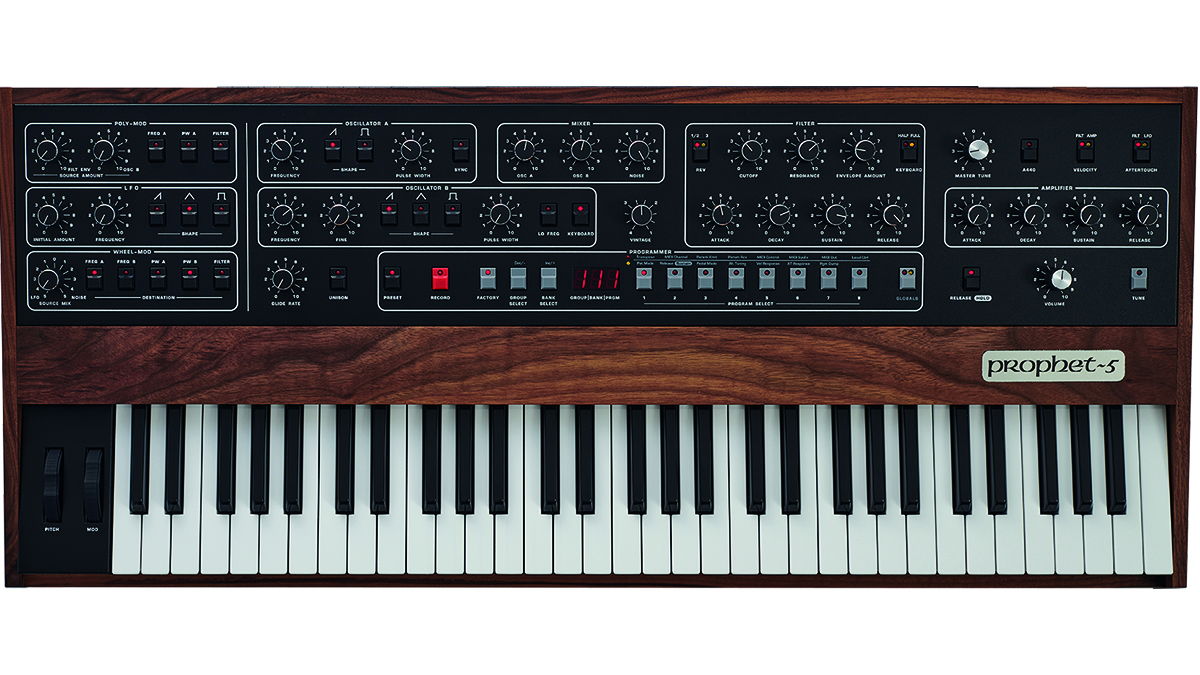
We say ‘eventually’ because as you dial through the presets, some actually do disappoint – at first anyway. Many are modelled on the sounds of the 80s – or indeed are the sounds of the 80s, by way of that bank of 1978 sounds.
And of course, this is intentional, but if you’re expecting huge EDM bass or arpeggiations, you’ll have to look elsewhere, although those sounds are perfectly doable as we’ll see.
What you do get, even with the more '80s presets, is a level of expressive control by way of that velocity and aftertouch that lifts even the most basic sounds as soon as you start actually playing the keyboard. So even the classic sounds come to life as you play the lovely Fatar keyboard, and we haven’t even got to the great sounds yet…
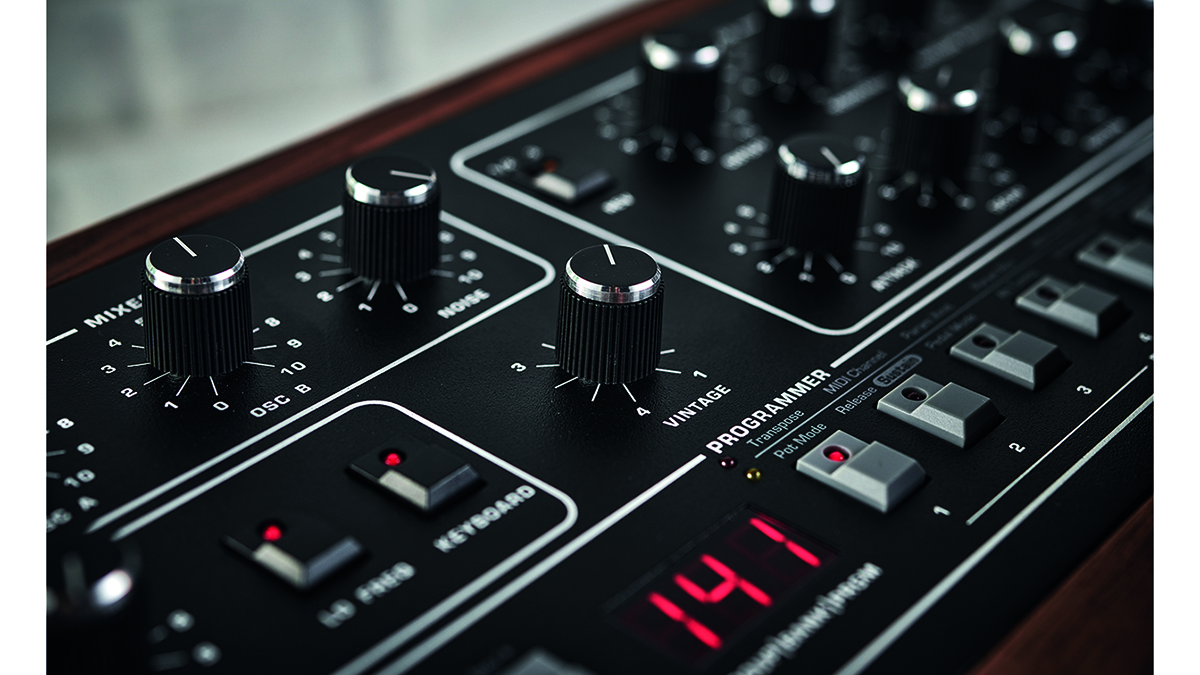
And when you get to them, you’ll be seriously impressed. Playing a great sound like some of the brassy pads seems to give you a depth that will blow any software away.
And let’s talk about the deep electric pianos and twinkly keys sounds that detune to Boards Of Canada levels when you push the Vintage knob right back to 1. Simple, ghostly pads, that sound so good to start with, are instantly transformed into menacing soundtracks by quickly introducing them to the Poly-Mod section – no wonder John Carpenter loves this synth so much.
In the same way, simple bass presets can be instantly tweaked into harmonic monsters (did we mention that EDM was very do-able, despite the '80s intentions?) and you begin to realise why Poly-Mod was such a hit – you’re not just relying on tweaks in the filter section to get instant, hands-on impressiveness anymore!
Overall it’s an inspiring journey – back in time, yes but with so much instant potential to go fast-forward too.
10? Double the 5 surely?
Sequential released a 10-voice version of the Prophet-5 back in 78 which included a massive (for then) 10 voices of polyphony. It was a lot of components in one keyboard and often overheated.
However, in 1981 Sequential released a double manual Prophet-10 – literally two Prophet-5s sat on top of one another – that sorted most of the issues out. There were two versions of this, the last being the most stable, but they are pretty rare; there was one for sale on Reverb a while back for around £12k.
Now there’s another way to get a Prophet-10 as, along with the new Prophet-5, Sequential has released a 10-voice Rev4 Prophet-10. It’s identical to the 5 but with 10 voices, of course, and an enhanced price.
The extra five voices cost anything between £600 and £800 more. Whether you think that’s worth it is up to you, but it’s a real tempter – that doesn’t seem a lot for double the Prophet power.
That said, if you’re recording into the box it’s so easy to stack the audio that one 5 will do. Not to mention the old ‘restrictions enhance creativity’ argument. You can have too much of a good thing…
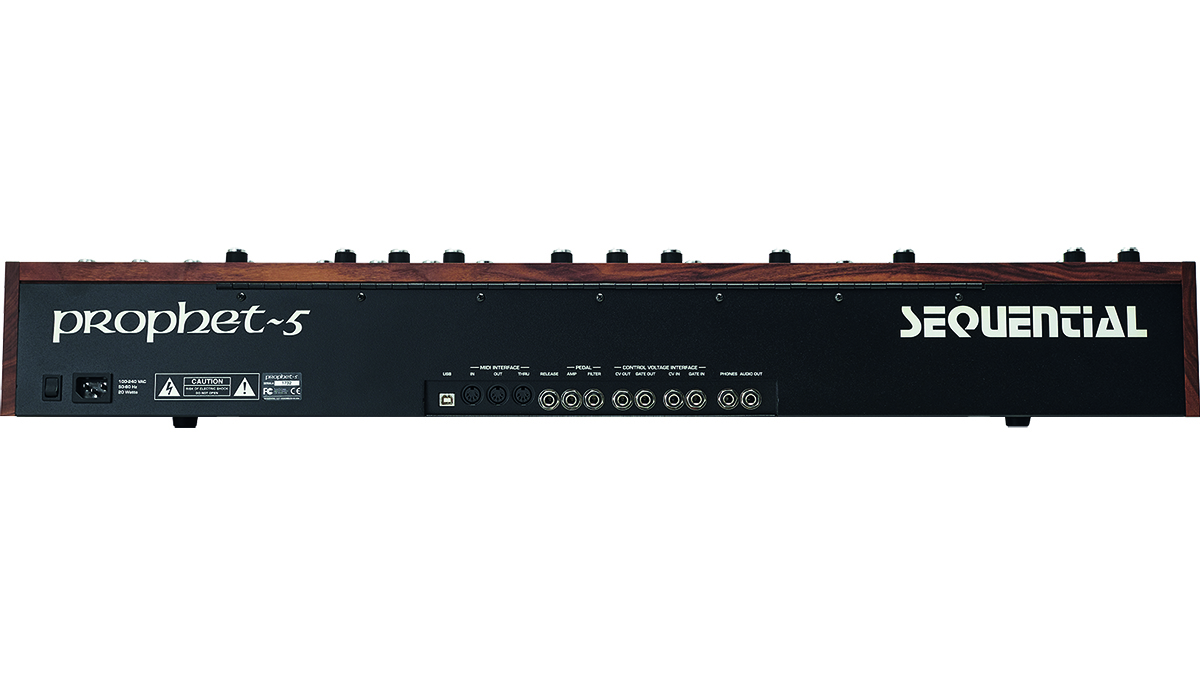
History in the making
Back to the Prophet-5, three grand plus is a lot for any synth and there are lots of cheaper polysynths better suited to more contemporary styles, with better specs. However, the Prophet-5 is a legend for a reason and this Rev4 is simply that legend made better.
Should you fork out for the 10-voice? See above. But if you want to grasp the roots from which so much electronic music grew, the price might not seem so much – this is a history still in the making.
MusicRadar verdict: The best incarnation and easily adds enough to bring it into 2021. Other options cost less… but they’re not a Prophet-5, are they?
The web says
"Great for lush PWM string pads, brass stabs, screaming lead lines, big EDM pads and risers, banging bass sounds, delicate choir and flutes, vintage organ emulations and sci‑fi effects, the Rev 4 Prophet‑5 and Prophet‑10 have resumed their place at the top table of polyphonic analogue synths."
Sound on Sound
Hands-on demos
Sequential
Starsky Carr
Perfect Circuit
musictrackjp
Specifications
- 5-voice analogue polysynth
- 61-note semi-weighted Fatar keyboard with velocity and aftertouch
- Two CEM 3340 VCOs/voice
- Switchable low-pass filter between Dave Rossum-designed 2140, and Doug Curtis-designed CEM 3320
- LFO (3 waveshapes) and Poly-Mod modulation
- Vintage Knob for increased Rev1 instability
- 200 user and 200 factory programs in five banks of 40 programs
- CONTACT: Sequential
Andy has been writing about music production and technology for 30 years having started out on Music Technology magazine back in 1992. He has edited the magazines Future Music, Keyboard Review, MusicTech and Computer Music, which he helped launch back in 1998. He owns way too many synthesizers.

